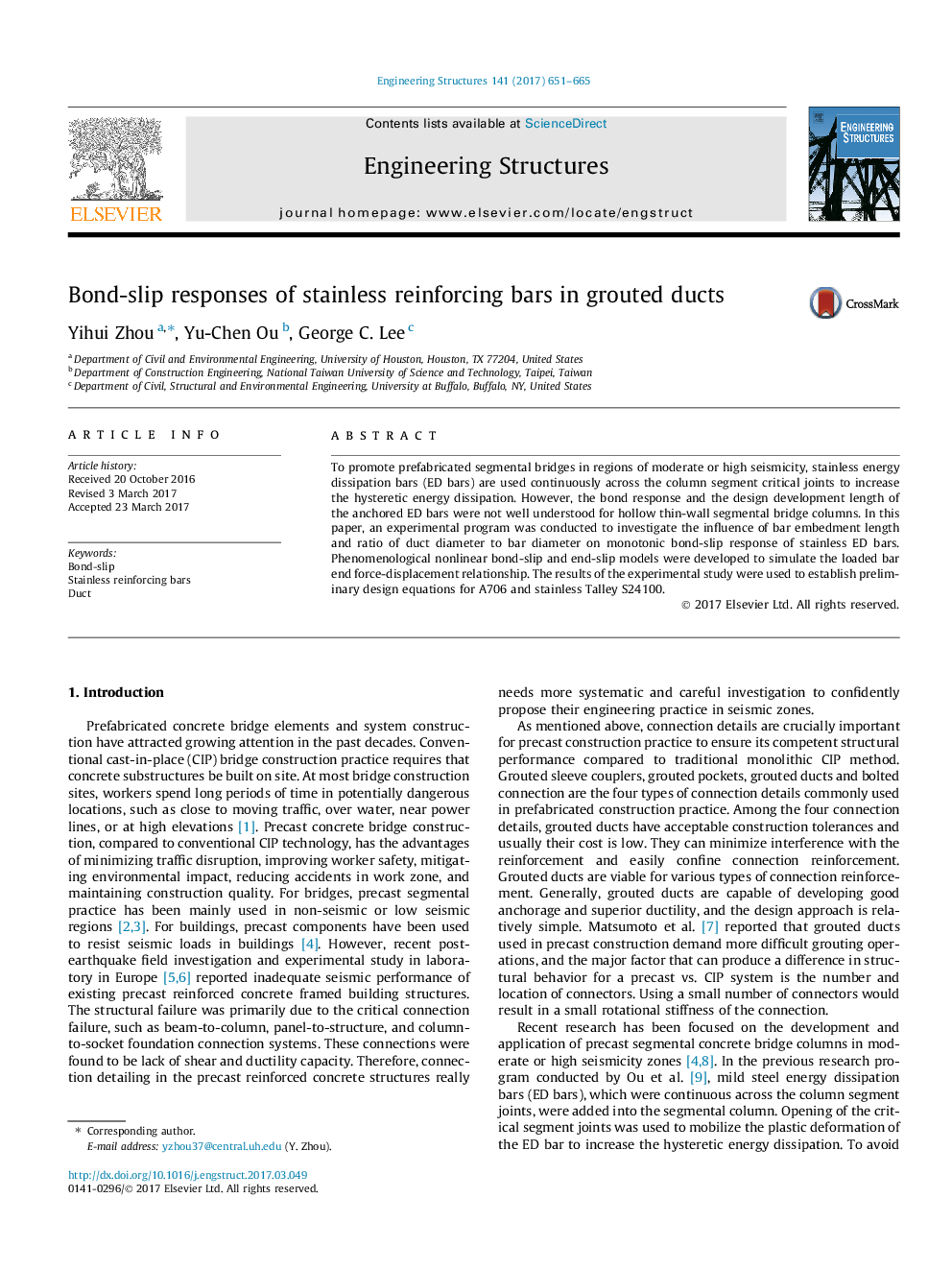| Article ID | Journal | Published Year | Pages | File Type |
|---|---|---|---|---|
| 4920275 | Engineering Structures | 2017 | 15 Pages |
Abstract
To promote prefabricated segmental bridges in regions of moderate or high seismicity, stainless energy dissipation bars (ED bars) are used continuously across the column segment critical joints to increase the hysteretic energy dissipation. However, the bond response and the design development length of the anchored ED bars were not well understood for hollow thin-wall segmental bridge columns. In this paper, an experimental program was conducted to investigate the influence of bar embedment length and ratio of duct diameter to bar diameter on monotonic bond-slip response of stainless ED bars. Phenomenological nonlinear bond-slip and end-slip models were developed to simulate the loaded bar end force-displacement relationship. The results of the experimental study were used to establish preliminary design equations for A706 and stainless Talley S24100.
Related Topics
Physical Sciences and Engineering
Earth and Planetary Sciences
Geotechnical Engineering and Engineering Geology
Authors
Yihui Zhou, Yu-Chen Ou, George C. Lee,
